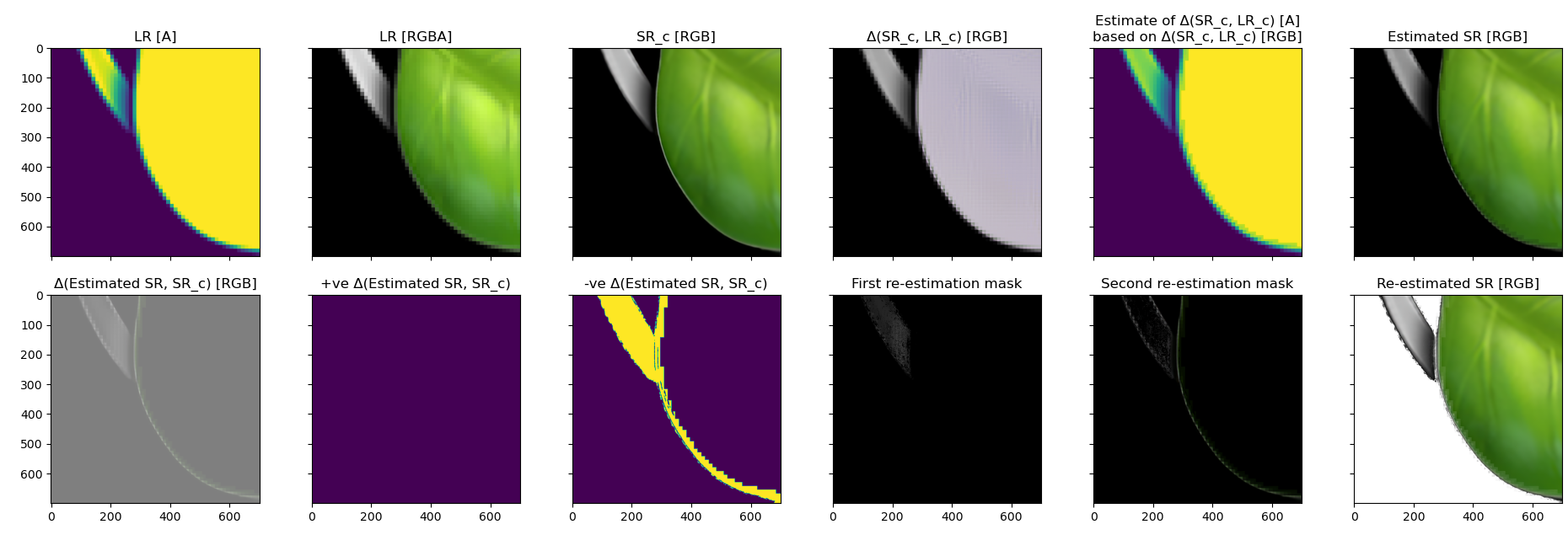LIIF
This repository contains the official implementation for LIIF introduced in the following paper:
Learning Continuous Image Representation with Local Implicit Image Function
Yinbo Chen, Sifei Liu, Xiaolong Wang
The project page with video is at https://yinboc.github.io/liif/.
Citation
If you find our work useful in your research, please cite:
@article{chen2020learning,
title={Learning Continuous Image Representation with Local Implicit Image Function},
author={Chen, Yinbo and Liu, Sifei and Wang, Xiaolong},
journal={arXiv preprint arXiv:2012.09161},
year={2020}
}
Environment
- Python 3
- Pytorch 1.6.0
- TensorboardX
- yaml, numpy, tqdm, imageio
Quick Start
- Download a DIV2K pre-trained model.
| Model | File size | Download |
|---|---|---|
| EDSR-baseline-LIIF | 18M | Dropbox | Google Drive |
| RDN-LIIF | 256M | Dropbox | Google Drive |
- Convert your image to LIIF and present it in a given resolution (with GPU 0,
[MODEL_PATH]denotes the.pthfile)
python demo.py --input xxx.png --model [MODEL_PATH] --resolution [HEIGHT],[WIDTH] --output output.png --gpu 0
Reproducing Experiments
Data
mkdir load for putting the dataset folders.
-
DIV2K:
mkdirandcdintoload/div2k. Download HR images and bicubic validation LR images from DIV2K website (i.e. Train_HR, Valid_HR, Valid_LR_X2, Valid_LR_X3, Valid_LR_X4).unzipthese files to get the image folders. -
benchmark datasets:
cdintoload/. Download andtar -xfthe benchmark datasets (provided by this repo), get aload/benchmarkfolder with sub-foldersSet5/, Set14/, B100/, Urban100/. -
celebAHQ:
mkdir load/celebAHQandcp scripts/resize.py load/celebAHQ/, thencd load/celebAHQ/. Download andunzipdata1024x1024.zip from the Google Drive link (provided by this repo). Runpython resize.pyand get image folders256/, 128/, 64/, 32/. Download the split.json.
Running the code
0. Preliminaries
-
For
train_liif.pyortest.py, use--gpu [GPU]to specify the GPUs (e.g.--gpu 0or--gpu 0,1). -
For
train_liif.py, by default, the save folder is atsave/_[CONFIG_NAME]. We can use--nameto specify a name if needed. -
For dataset args in configs,
cache: in_memorydenotes pre-loading into memory (may require large memory, e.g. ~40GB for DIV2K),cache: bindenotes creating binary files (in a sibling folder) for the first time,cache: nonedenotes direct loading. We can modify it according to the hardware resources before running the training scripts.
1. DIV2K experiments
Train: python train_liif.py --config configs/train-div2k/train_edsr-baseline-liif.yaml (with EDSR-baseline backbone, for RDN replace edsr-baseline with rdn). We use 1 GPU for training EDSR-baseline-LIIF and 4 GPUs for RDN-LIIF.
Test: bash scripts/test-div2k.sh [MODEL_PATH] [GPU] for div2k validation set, bash scripts/test-benchmark.sh [MODEL_PATH] [GPU] for benchmark datasets. [MODEL_PATH] is the path to a .pth file, we use epoch-last.pth in corresponding save folder.
2. celebAHQ experiments
Train: python train_liif.py --config configs/train-celebAHQ/[CONFIG_NAME].yaml.
Test: python test.py --config configs/test/test-celebAHQ-32-256.yaml --model [MODEL_PATH] (or test-celebAHQ-64-128.yaml for another task). We use epoch-best.pth in corresponding save folder.



